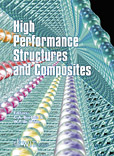Structural Optimization Of A Satellite Interface: Performance Assessment Of Commercial Codes
Price
Free (open access)
Transaction
Volume
59
Pages
10
Published
2002
Size
570 kb
Paper DOI
10.2495/HPS020451
Copyright
WIT Press
Author(s)
S.A. Falco & A.R. de Faria
Abstract
The commercial structural optimization codes currently available are mostly based on traditional continuous methods such as feasible directions, sequential linear programming and sequential quadratic programming. Despite those similarities, different commercial codes almost always lead to different designs whenever the complexity of the design space is increased by a moderate to large number of design variables. In these cases fine tuning of search parameters, scaling of design variables or selection of a good initial design are often indispensable. Furthermore, it is observed that the choice of a representative set of design variables is a decisive factor for a successful optimization procedure. The objective of this work is to assess commercial optimization codes, namely MSC. Nastran (SOL200) [l] and Genesis (DOT) [2], in terms of suitability, ease to use, convergence characteristics and accuracy of results. For the purpose of investigation, the initial configuration of a typical scientific satellite mechanical interface is considered. The satellite interface, consisting of a rectangular plate with reinforcements, is intended to connect the launcher to the satellite body and must be able to satisfactorily with stand loads transmitted by the launcher. Constraints are imposed such that longitudinal and transverse vibration modes do not couple with the launcher frequencies. Weight minimization and frequency maximization are the optimization problems considered along with appropriate constraints. The results obtained with the different optimization codes presented in ths paper indicate the potentiality of the optimization tools for the design of an aerospace structure.
Keywords





